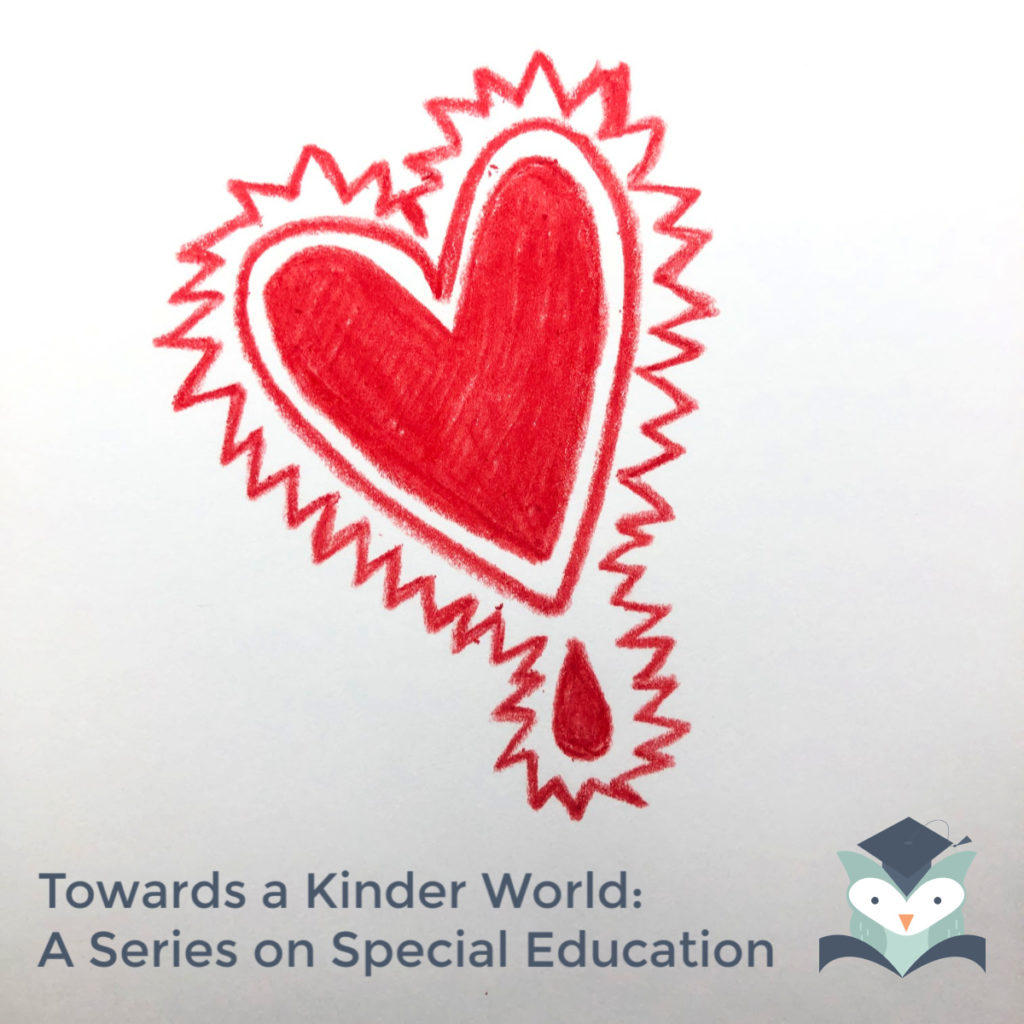
Numerous studies have now shown that the way millions of American children are taught to read is not actually making them fluent readers. It is, instead, leading to lifelong learning struggles and, in some cases, the need for special education services that would not have otherwise been needed—especially for children from low-income families and children of color. The reason this doesn’t raise any red flags is steeped in bias.
“[A]n implicit assumption in many schools is that an indeterminate number of students will not learn to read. When starting from this perspective, it can become convenient to relinquish instructional responsibility for a sizable group of students. Most often, these students are children from at-risk populations or children with disabilities receiving special education services,” Michael D. Coyne, Edward J. Kame’enui, and Deborah C. Simmons wrote in “Improving Beginning Reading Instruction and Intervention for Students with LD: Reconciling ‘All’ with ‘Each’” which appeared in the Journal of Learning Disabilities in 2004.
For many students, it takes an IEP or remedial education to get evidence-based reading instruction.
To increase the equity and efficiency of reading instruction, Coyne and his colleagues argue for evidence-based reading instruction for all students from day one, rather than waiting to deploy these proven methods once a child has been identified with a reading disability. Teaching all students to read in this way, they argue, will both prevent some students from developing reading disabilities and will provide early and consistent support for those students whose brains are dyslexic, alexic, or hyperlexic so that they can keep pace with their classmates.
It’s a rare win-win, in other words.
The authors conclude:
In this article, we have suggested that a schoolwide system designed to teach all students to read, and informed by the scientific knowledge base in beginning reading, also supports individualized and flexible instruction designed to teach each student to read, including students with disabilities. If this is indeed the case, improving schoolwide reading practices in general education will directly benefit students with RD. In fact, we may not be able to optimize outcomes for students with RD unless special education services are supported by effective reading practices implemented schoolwide. Therefore, the field of special education has a vested interest in promoting schoolwide reading efforts.
It may seem obvious. If there’s a best way to do things, shouldn’t we just do that? Ounce of prevention, pound of cure, etc., etc.? Well, we don’t. Because of the war.
Casualties of War
The original Reading War was between “phonics” and “whole language.” Team Phonics said that reading was an unnatural skill that had to be developed procedurally and Team Whole Language believed that reading naturally developed from exposure to the written word, especially if those texts were relevant or interesting to children.
In the 1990s, a treaty of sorts, known as balanced literacy, sought to take the best of both worlds. In theory, it’s a precise blend of necessary phonics and effective texts to foster “the joy of reading.” In practice, researchers found that balanced literacy was less rigorously balanced in the classroom. It was more playing by ear and less following the sheet music.
It’s not surprising because balanced literacy, if you read the NEA’s statement on it, is less about what’s actually best, and more about a political resolution. It would be a great way of reaching consensus if we didn’t have science. But we do.
Science does support a mix of phonics (and related skills), sight words, and vocabulary building, but in very specific ways. It also mixes challenging and relevant content. At its root, evidence-based reading relies on five underlying conditions, according to Barbara Foorman, Jack Fletcher, and David Francis.
- Phonological Awareness: the sound of words.
- Phonemic Awareness: the collection of sounds that make up a word.
- Alphabetic Principle: connection of these sounds and parts to the letters of the alphabet, which make up words.
- Orthographic Awareness: the consistent spelling rules of a written language.
- Comprehension Monitoring Strategies: connecting the words to their meaning while you read, and making sure those meanings make sense together as you go along.
In a remarkable year of legislation, this science found its way into HB 3, the landmark school finance bill that not only put more money into public schools, but offered guidance on how to spend that money.
Your Reading Buddy, HB 3
The state of Texas has recently invested in evidence-based approaches to reading instruction, and by 2023, according to HB 3, all K–3 teachers, including special education teachers, and principals are required to become trained in evidence-based literacy instruction through a state authorized provider.
In San Antonio, SA Reads, Region 20 Education Service Center, North East ISD, and Pre-K 4 SA have all been designated HB 3 Reading Academies, authorized to teach teachers to teach reading.
The recognition that learning to read is a fundamental skill that can be taught correctly or incorrectly is a gift to Texas families. It offers families another tool to bring to the table when their student is struggling, and if they aren’t getting good reading instruction, chances are they will struggle. True, research shows that around 70 percent of students will eventually figure it out, but in first or second grade there’s no need to “wait and see.”
If by the end of kindergarten the elements of reading are not showing up at home—rhyming, pointing out starting sounds, identifying letters and the sounds they make—Texas parents can now ask their teacher whether they are teaching according to the science of reading. Why or why not? Parents can advocate for their school to mandate this evidence based method knowing that the resources do exist to make it a reality.
And if the teacher is basing instruction on science, and the student still struggles, it will be easier to pinpoint the source of struggle and target early intervention by eliminating the variable of poor instruction. 
About the Author
Bekah McNeel is a San Antonio-based education writer who focuses on equity, innovation, and social-emotional learning for publications such as The 74. Over the years, we have republished local education coverage from her Hall Monitor site, and last November she wrote for us a four-part series, “Punished, Not Served,” about unfair discipline for students with disabilities.
Read More
- “Identifying Hearing Loss in Children, and Finding Help From Friends,” Bekah McNeel, San Antonio Charter Moms, July 29, 2020
- “Vision Therapy Might Be the Solution for Your Child’s Learning Disorder,” Bekah McNeel, San Antonio Charter Moms, July 8, 2020
- “One Mom’s Experience with a Dyslexia Simulator,” Bekah McNeel, San Antonio Charter Moms, June 24, 2020
- “Celebrate Dyslexia: Education, Identification, and Celebration of Dyslexic Students,” Bekah McNeel, San Antonio Charter Moms, June 10, 2020
